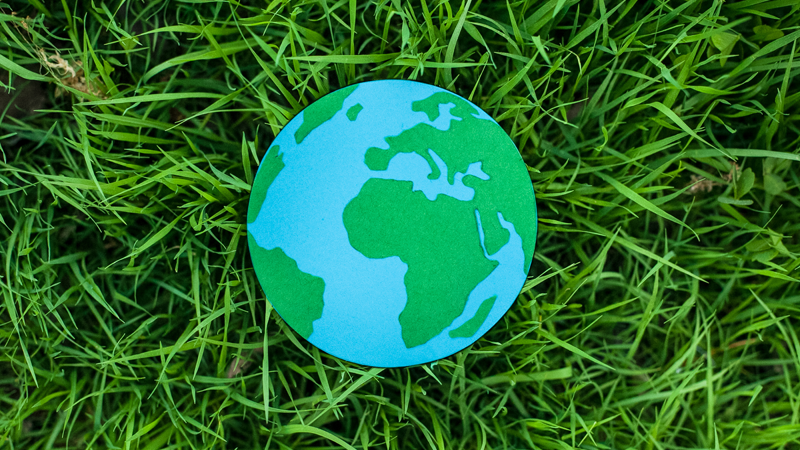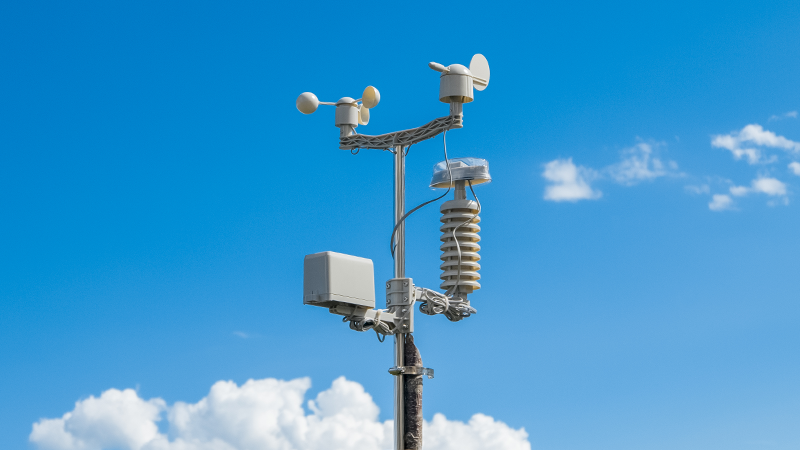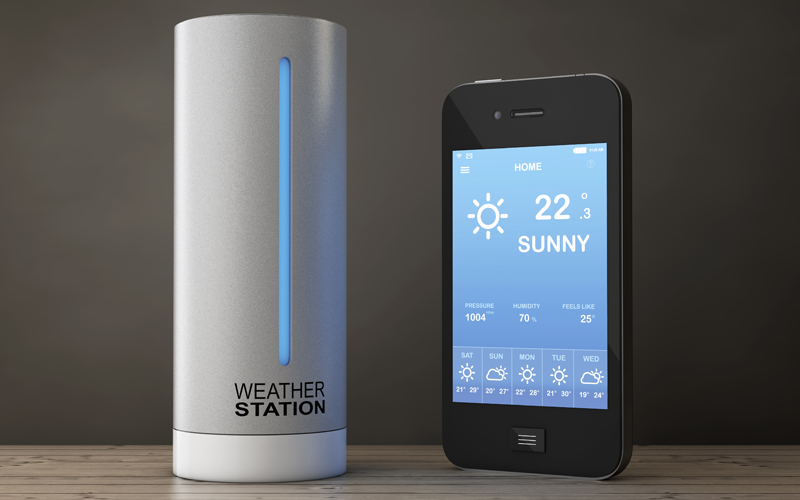The ecosystem of our planet consists of many intertwined and constantly interacting complex networks. Global climate change is forcing humanity to look for ways to control the transformation of the environment in order to recognize the ecorisks in advance and, if possible, to minimize their consequences. One of them is the increasingly popular concept of the Internet of Things - connected to the global network “smart devices” that allow both monitoring and analysis of the state of the ecosystem as a whole, as well as specific tasks to eliminate the negative impact on it of a person.

Smart Monitoring of the Planet
The number of the population of the Earth continues to grow and the need for the rational use of natural resources is becoming increasingly urgent. Another global problem is climate change associated with both the use of traditional fossil energy sources and the consequences of human activity.
The Internet of Things (IoT) wireless technologies today allow using various sensors to predict climate change and analyze the ecological state of almost any region of the Earth. A lot of them have already been adapted to the processes of managing the elimination of the negative impact on nature in places of high concentration of people, in particular, in large and medium-sized cities.
The ability to receive a continuous stream of data allows you to take the necessary measures and avoid many of the threats associated with environmental anomalies. Among the well-known features of "smart" devices - monitoring of weather conditions, seismic hazards, the state of the atmosphere and water. These are, albeit important, by no means all areas of application of IT-technologies in the environmental field. Today, new products based on IoT systems that address environmental problems are being actively developed and tested. Their mass implementation is hampered by certain technical problems, for example, various protocols of device operation, imperfect wireless infrastructure, but all of them are at the decision stage and will be removed in the near future.

Environmental protection involves different types of solutions, and IoT concepts will help most of them. But many environmental problems are so complex that their resolution takes time to comprehend and develop a method of neutralization. Collecting the necessary data is the first step on this path, so today millions of “smart” devices connected in a single network monitor the environmental impact of the products of minerals processed into energy, human waste, the state of forests, rivers, seas and other ecosystems.
IoT today: in the air, forest and water
In recent years, personal environmental sensors and mobile applications for data removal have been particularly popular. The range of their capabilities is quite wide: from measuring environmental parameters (air quality, temperature, humidity, carbon dioxide content) to the level of radiation. There are those with which you can check the amount of nitrates in products. The small size and operation via Wi-Fi, Bluetooth and GPS modules allows you to monitor the environment using crowdsourcing technology, which greatly increases the accuracy of the data obtained. With the help of personal sensors it is possible to change the ways of obtaining information and its processing. You can receive data from sensors and sensors both on a PC and a smartphone.

As an example of “smart” environmental monitoring devices that have already proven themselves and have become popular with users, you can use the Air Quality Egg sensor, designed to check the quality of the air directly surrounding its user. The information gathered by all the eggs connected to the network is displayed on a special website in real time and allows you to assess the level of air pollution both directly in the user's home or office, and in the city as a whole. This sensor is used both in America and in Europe, and gradually penetrates into developing countries. Not bad proved similar devices, such as Speck, Sensordrone, iGeigie and others.
But to protect the forest developed a special sensor Invisible Tracck, which is placed on randomly selected trees and is designed to monitor the illegal extraction of wood. If the tree felled by the poachers turns out to be in the area of the closest wireless tower, the signal from the sensor goes to the monitoring center, and then law enforcement agencies will start working. This sensor is equipped with a battery and is able to work offline for about a year. The use of Invisible Tracck helped preserve large areas of the Amazonian jungle, which are considered to be "lungs of the planet."

Sensor-equipped buoys collect data on the biochemical state of the Great Barrier Reef, located along the Australian continent. Declared a World Heritage Site by UNESCO, this coral formation has become an ecosystem for a huge number of living organisms and significantly affects the general state of the environment of the region. The data received from the sensors are used by Australian conservation organizations to analyze the extent of damage to coral reefs, fish movement and the bio-state of the various microorganisms inhabiting them.
The scourge of modern cities is garbage. To solve this problem, several years ago, smart containers, called Bigbelly, were invented. Equipped with a sensor working on a solar battery, the container monitors its filling and transmits via wireless communication to the relevant services of the city. The information collected from Bigbelly allows them to plan the garbage collection and promptly clean containers from it.

Using IoT, many countries are trying to make the infrastructure of their cities not only safer, but also environmentally safer. The same street lighting “supplies” about 6% of carbon dioxide to the atmosphere. Some countries are trying to reduce the share of its emissions by improving the lighting systems. For example, Denmark, which seeks to reduce carbon dioxide emissions to 2025, installs smart street lights on the streets of Copenhagen. With the help of sensors, they monitor the fullness of a certain part of the street with cars or people, weather conditions, and on the basis of these data regulate the brightness of the lighting and, accordingly, the level of carbon dioxide emission.
Socialization of environmental monitoring
In general, the development of IoT should have a positive impact on the ecological state of the planet. The huge potential of IoT technology, which has not yet been fully utilized, is capable of giving humanity new solutions to environmental problems. And today there are a lot of projects implemented in the world, which are based on monitoring the state of the environment with the help of “smart” devices that can prevent man-made disasters or natural disasters.

But still, sensors that collect data from various sites and territories for environmental service monitoring centers cannot provide accurate information for a specific person living and working in a particular place. In order to have data on the state of its environment in the office, apartment or when traveling on the ground in real time, you need to have with you the appropriate mobile devices and applications. This will make it possible not only to avoid areas with increased pollution, but also to analyze the factors that lead to it.
The more IoT devices connected to the network become, the faster their new social function will be formed. Users using special platforms will interact not only with each other, but also with the "smart devices" themselves. With the help of special designers, users will be able to create the software they need, and IoT devices will solve the tasks necessary for a particular person, in particular, related to environmental monitoring.
Cloud technology will use the data to a huge number of users. Together, they will form some kind of social network IoT (Social IoT, SIoT). This kind of crowd-monitoring of the environment, based on the capabilities of the SIoT platform, will be able to provide an analysis of the state of the environment not only in different parts of the world, but also in a specific place, and more accurately and more efficiently than the existing methods. This will allow in real time to receive truly valuable information about the natural processes that occur on our land.

No doubt, the boom of mass introduction of IoT devices in all spheres of human activity expected in the next few years will have a significant impact on the solution of environmental problems through the development of many innovative initiatives in the environmental field.